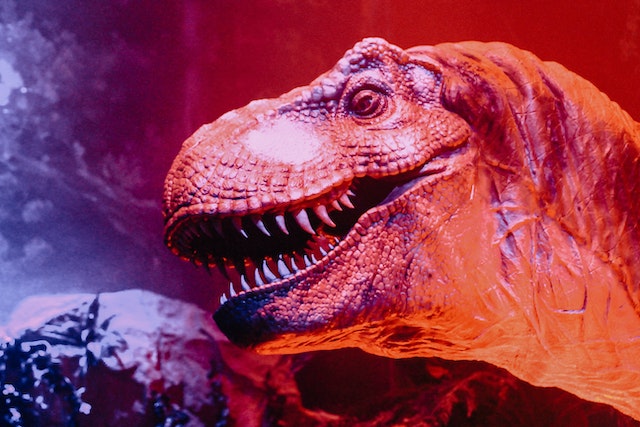Food scarcity played a crucial role in the survival of prehistoric species, and its availability directly influenced their population dynamics and evolutionary trajectories. Here are key aspects of food scarcity and its impact on prehistoric species:
1. Resource Competition: Food scarcity often leads to intensified competition among individuals within a species or between different species. When resources become limited, individuals must compete for access to those resources, including food. This competition can shape behaviors, such as foraging strategies, territoriality, and social dynamics, as individuals strive to secure enough food to survive and reproduce.
2. Adaptation and Evolution: Food scarcity can act as a selective pressure, driving adaptations in prehistoric species. Individuals with traits that enable them to efficiently locate, capture, or utilize scarce food resources have a greater chance of survival and reproduction. Over time, these advantageous traits become more prevalent in the population, leading to evolutionary changes. This evolutionary response to food scarcity can include modifications in feeding structures, specialized diets, or behavioral adaptations related to foraging and hunting.
3. Population Dynamics: Food scarcity can have direct impacts on population size and dynamics. When food resources are limited, populations may experience reduced growth rates, decreased reproduction, and increased mortality. As individuals struggle to find adequate nourishment, population numbers may decline, making the species more vulnerable to extinction. Furthermore, food scarcity can influence sex ratios, age structure, and migration patterns within populations.
4. Ecological Interactions: Food scarcity can influence the relationships between species within an ecosystem. In predator-prey interactions, scarcity of prey can affect the hunting success and survival of predators. Additionally, food scarcity can lead to shifts in species’ ranges, as individuals seek out more favorable areas with better food availability. These changes in ecological interactions can have cascading effects on the entire ecosystem.
5. Extinction Risk: Prolonged food scarcity, combined with other environmental challenges, can increase the risk of extinction for prehistoric species. When a population cannot find sufficient food to sustain itself, individuals may suffer from malnutrition, weakened immune systems, and reduced reproductive success. If food scarcity persists over multiple generations, it can lead to a population decline that ultimately results in extinction.
Understanding the role of food scarcity in the survival of prehistoric species provides insights into the ecological dynamics and evolutionary pressures that shaped ancient ecosystems. By studying these dynamics, scientists gain a deeper understanding of how species respond to resource limitations and the potential consequences of food scarcity on population viability and the persistence of different species over time.












